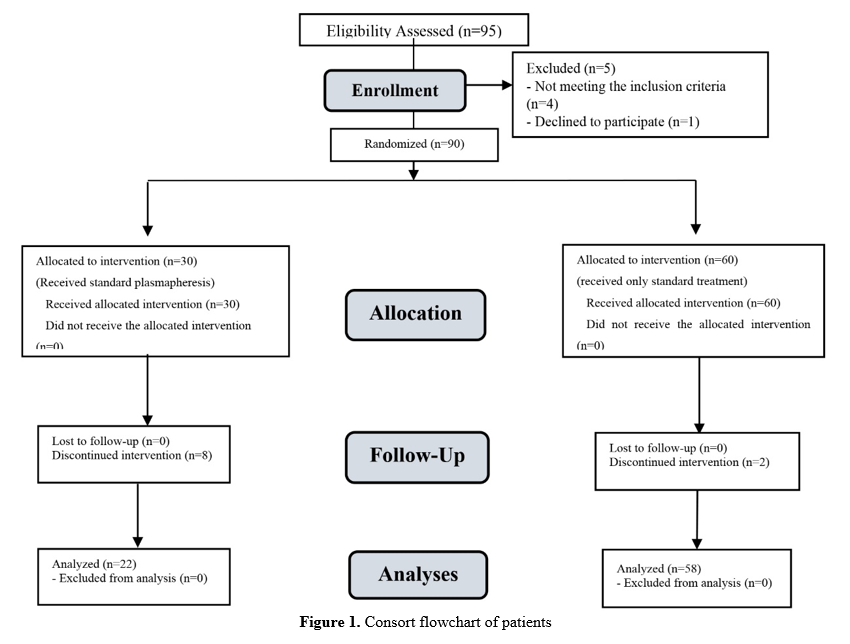1. Eddleston M, Karalliedde L, Buckley N, Fernando R, Hutchinson G, Isbister G, et al. Pesticide poisoning in the developing world - a minimum pesticides list. Lancet.2002;360:1163-67. [
doi:10.1016/S0140-6736(02)11204-9]
2. Eddleston M. Poisoning by pesticides. Medicine. 2020;48(3):214-17. [
doi:10.1016/j.mpmed.2019.12.019]
3. Bagherian F, Kalani N, Rahmanian F, Abiri S, Hatami N, Foroughian M, et al. Aluminum phosphide poisoning mortality rate in Iran; A systematic review and meta-analysis. Arch Acad Emerg Med. 2021;9(1): 29-36. [
doi: 10.22037/aaem.v9i1.1396] [
pmid: 34870232]
4. Dorooshi G, Mirzae M, Fard NT, Zoofaghari S, Mood NE. Investigating the outcomes of aluminum phosphide poisoning in khorshid referral hospital, Isfahan, Iran: A retrospective study. Journal of Research in Pharmacy Practice. 2021;10(4):166. [
doi:10.4103/jrpp.jrpp_88_21]
5. Garg KK. Review of aluminum phosphide poisoning. International Journal of Medical Science and Public Health. 2020;9(7):392-400. [
doi:10.5455/ijmsph.2020.07118202020072020]
6. Singh S, Singh D, Wig N, Jit I, Sharma BK. Aluminum phosphide ingestion - a clinico-pathologic study. Journal of Toxicology: Clinical Toxicology. 1996;34(6):703-06. [
doi:10.3109/15563659609013832]
7. Mathai A, Bhanu MS. Acute aluminium phosphide poisoning: Can we predict mortality?.Indian Journal of Anaesthesia. 2010; 54 (4): 302-07. [
doi:10.4103/0019-5049.68372]
8. Hashemi-Domeneh B, Zamani N, Hassanian-Moghaddam H, Rahimi M, Shadnia S, Erfantalab P, et al. A review of aluminium phosphide poisoning and a flowchart to treat it. 2016;67:183-93. [
Arhiv Za Higijenu Rada I Toksikologiju.]
9. Araújo RV, Santos SD, Igne Ferreira E, Giarolla J. New advances in general biomedical applications of PAMAM dendrimers. Molecules. 2018;23(11):2849. [
doi:10.1515/aiht-2016-67-2784]
10. Gheshlaghi F, Lavasanijou MR, Moghaddam NA, Khazaei M, Behjati M, Farajzadegan Z, et al. N‑acetylcysteine, ascorbic acid, and methylene blue for the treatment of aluminium phosphide poisoning: Still beneficial? Toxicol Int. 2015; 22:40‑4. [
doi:10.4103/0971-6580.172255]
11. Dorooshi G, Zoofaghari S, Mood NE, Gheshlaghi F. A newly proposed management protocol for acute aluminum phosphide poisoning. Journal of Research in Pharmacy Practice. 2018; 7:168‑69. [
doi:10.4103/jrpp.JRPP_18_12]
12. Moghadamnia AA. An update on toxicology of aluminum phosphide. DARU J Pharm Sci . 2012;20:1-8. [
doi:10.1186/2008-2231-20-25]
13. Ari HF, Turhan M, Baspinar H, Kirhan B, Ari M. Aluminum phosphide toxicity: A rare cause of multiorgan dysfunction syndrome. Indian Pediatrics Case Reports. 2022;2(2):91. [
doi:10.4103/ipcares.ipcares_3_22]
14. Shariat SS, Zoofaghari S, Gheshlaghi F. Effectiveness of plasmapheresis in aluminum phosphate poisoning. Journal of Research in Pharmacy Practice. 2021;10(1):57. [
doi:10.4103/jrpp.JRPP_21_27]
15. Ibrahim RB, Balogun RA. Medications in patients treated with therapeutic plasma exchange: prescription dosage, timing, and drug overdose. Seminars Dialysis. 2012;25:176e189. [
doi:10.1111/j.1525-139X.2011.01030.x]
16. Samtleben W, Mistry‐Burchardi N, Hartmann B, Lennertz A, Bosch T. Therapeutic plasma exchange in the intensive care setting. Ther Apher. 2001;5(5):351-57. [
doi:10.1046/j.1526-0968.2001.00383.x]
17. Yazdi MF, Baghianimoghadam M, Nazmiyeh H, Ahmadabadi AD, Adabi MA. Response to plasmapheresis in myasthenia gravis patients: 22 cases report. Romanian journal of internal medicine. 2012;50(3):245-47. [
Link]
18. Yokoyama S, Kikkawa T, Hayashi R. Plasmapheresis: new trends in therapeutic applications. Therapy of hypercholesterolemia. In Proc 2nd International Symposium on Plasmapheresis: Artificial Organs. Supplement. 1984. [
Link]
19. Ahila Ayyavoo DN, Muthialu N, Ramachandran P. Plasmapheresis in organophosphorus poisoning-intensive management and its successful use. J Clin Toxicol.2011;1:2161-95. [
Link]
20. Disel NR, Acikalin A, Kekec Z, Sebe A. Utilization of plasmapheresis for organophosphate intoxication: A case report. Turkish Journal of Emergency Medicine. 2016;16(2):69-71. [
doi:10.1016/j.tjem.2015.06.003]
21. Güven M, Sungur M, Eser B. The effect of plasmapheresis on plasma cholinesterase levels in a patient with organophosphate poisoning. Human & Experimental Toxicology. 2004;23(7):365-68. [
doi:10.1191/0960327104ht462cr]
22. Nenov VD, Marinov P, Sabeva J, Nenov DS. Current applications of plasmapheresis in clinical toxicology. Nephrology dialysis transplantation. 2003;18(suppl_5):v56-8. [
doi:10.1093/ndt/gfg1049]
23. Deng Y, Qiu L. Therapeutic plasma exchange: a second‐line treatment for brodifacoum poisoning following an anaphylactoid reaction to vitamin K. Clin Case Rep. 2017;5(1):35. [
doi:10.1002/ccr3.756] [
pmid: 28096987]
24. Sari I, Turkcuer I, Erurker T, Serinken M, Seyit M, Keskin A. Therapeutic plasma exchange in amitriptyline intoxication: case report and review of the literature. Transfusion and Apheresis Science. 2011;45(2):183-85. [
doi:10.1016/j.transci.2011.07.015]
25. Patel N, Bayliss GP. Developments in extracorporeal therapy for the poisoned patient. Advanced Drug Delivery Reviews. 2015; 90:3-11. [
doi:10.1016/j.addr.2015.05.017]
26. Zamani N, Hassanian-Moghaddam H, Ebrahimi S. Whole blood exchange transfusion as a promising treatment of aluminium phosphide poisoning. Arhiv Za Higijenu Rada I Toksikologiju. 2018;69(3):275-7. [
doi:10.2478/aiht-2018-69-3129]
27. Kartal O, Gulec M, Caliskaner Z, Nevruz O, Cetin T, Sener O. Urticaria Case Reports: 587 Plasmapheresis in a Patient with "Refractory" Urticarial Vasculitis. World Allergy Organ J. 2012;5(Suppl 2):S203. [
doi:10.1097/01.WOX.0000411702.50677.f2]
28. Basic‐Jukic N, Kes P, Glavas‐Boras S, Brunetta B, Bubic‐Filipi L, Puretic Z. Complications of therapeutic plasma exchange: experience with 4857 treatments. Therapeutic Apheresis and Dialysis. 2005;9(5):391-95. [
doi:10.1111/j.1744-9987.2005.00319.x]









































